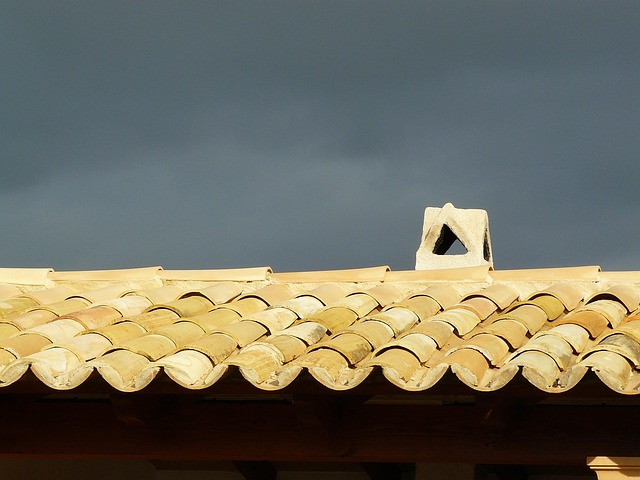Temporary roof membranes, including PVC and EPDM, offer versatile water-resistant solutions for emergency coverage, construction sites, events, and short-term needs. A meticulous site assessment is crucial before installation to ensure safety and select suitable methods based on dimensions, weather, and load considerations. Installation involves sealing materials like durable tarps or specialized roofs to prevent leaks, with removable fasteners for quick repairs. Regular inspections and timely maintenance, including repairing damage and sealing gaps, extend membrane lifespan. Skilled technicians provide expert services for reliable temporary roofing solutions, from emergency cover to event roof setups.
“In need of swift and reliable temporary roofing solutions? Expert installation of temporary roof membranes offers a crucial safety net for construction sites, events, and emergency repairs. From understanding diverse membrane types and their applications to mastering the step-by-step installation process, this guide delves into the art of providing robust, weatherproof temporary roofs. Discover how meticulous preparation, proper maintenance, and timely repairs extend the lifespan of these essential short-term roofing solutions.”
- Understanding Temporary Roof Membranes: Types and Applications
- Preparing for Installation: Site Assessment and Safety Measures
- Step-by-Step Guide to Expert Temporary Roof Installation
- Maintenance and Repair: Ensuring Longevity and Performance
Understanding Temporary Roof Membranes: Types and Applications
Temporary roof membranes have gained significant importance in various industries due to their versatility and functionality. These flexible, water-resistant materials are designed to provide an emergency roof cover or short-term roofing solution for construction sites, events, and temporary structures. The market offers diverse types tailored to specific applications, ensuring efficient and effective temporary roofing.
From PVC (polyvinyl chloride) to EPDM (ethylene propylene diene monomer), each membrane type possesses unique characteristics. PVC membranes are known for their durability and ease of installation, making them a popular choice for construction sites and portable roofing. EPDM, on the other hand, offers excellent weatherproof properties, suitable for both short-term and long-term emergency roof cover needs, including event roof covers. Their flexibility allows for easy adaptability to various roof shapes and sizes, providing temporary roof repair solutions that are both practical and cost-effective.
Preparing for Installation: Site Assessment and Safety Measures
Before beginning any temporary roof installation or repair project, a thorough site assessment is non-negotiable. This involves evaluating the existing structure to identify potential challenges and ensuring proper access for equipment and personnel. It’s crucial to consider factors like structural integrity, potential hazards, and proximity to sensitive areas like electrical or plumbing systems. During this phase, safety measures should be at the forefront—this includes setting up appropriate barriers, securing tools and materials, and ensuring clear communication among the team.
For construction sites or events requiring temporary roofing solutions, a site assessment helps in selecting the most suitable short-term roofing method. Whether it’s a quick emergency roof cover or a more complex portable roofing setup, understanding the dimensions, weather conditions, and expected load is key to successful installation. This process also involves planning for potential temporary roof repair scenarios, ensuring that materials are readily available and that the team is equipped to handle any unexpected issues swiftly and safely.
Step-by-Step Guide to Expert Temporary Roof Installation
Step-by-Step Guide to Expert Temporary Roof Installation
When it comes to temporary roofing solutions, expert installation is paramount for ensuring both functionality and safety. The process begins with a thorough assessment of the site and existing infrastructure. Professionals will evaluate the structure’s load-bearing capacity, identify potential weak points, and plan according to weather conditions. For emergency roof cover or short-term roofing needs, this step is crucial in determining the best temporary roof installation methods.
Next, the chosen material—whether it’s a durable, weatherproof tarp or specialized portable roofing—is carefully unrolled and secured. This involves proper sealing of joints and edges to prevent leaks. For construction site roofing, where quick changes are common, removable fasteners and underlayments can be employed for efficient temporary roof repair. The final touches include installing any necessary access points for maintenance and venting, ensuring a secure yet adaptable event roof cover system ready to withstand the elements.
Maintenance and Repair: Ensuring Longevity and Performance
Proper maintenance and timely repairs are key to extending the lifespan and maintaining the performance of temporary roof membranes. Regular inspections are crucial for identifying any signs of damage, wear, or leaks early on. This proactive approach ensures that minor issues don’t escalate into costly repairs or complete replacements. For instance, checking for loose or damaged panels, sealing gaps around pipes and vents, and repairing punctures caused by fallen debris can prevent water intrusion and maintain the integrity of the temporary roofing system.
When a temporary roof requires repair, it’s essential to use high-quality replacement parts and follow manufacturer guidelines closely. Repairs should be carried out promptly, especially in cases of emergency roof cover or short-term roofing solutions for construction sites and events. Skilled technicians can provide expert temporary roof installation and repair services, ensuring that the weatherproof membrane remains functional and secure throughout its intended use, whether it’s a temporary event roof cover or a portable roofing solution for remote job sites.
When it comes to temporary roofing solutions, expert installation is key to ensuring a robust and reliable emergency roof cover. From understanding the various types of membranes suitable for short-term roofing applications to mastering the step-by-step process of installation, preparation, and maintenance, this guide has equipped you with the knowledge to navigate the world of portable roofing. Whether for construction site roofing or event roof cover needs, implementing these practices will provide a weatherproof temporary solution that stands the test of time.
